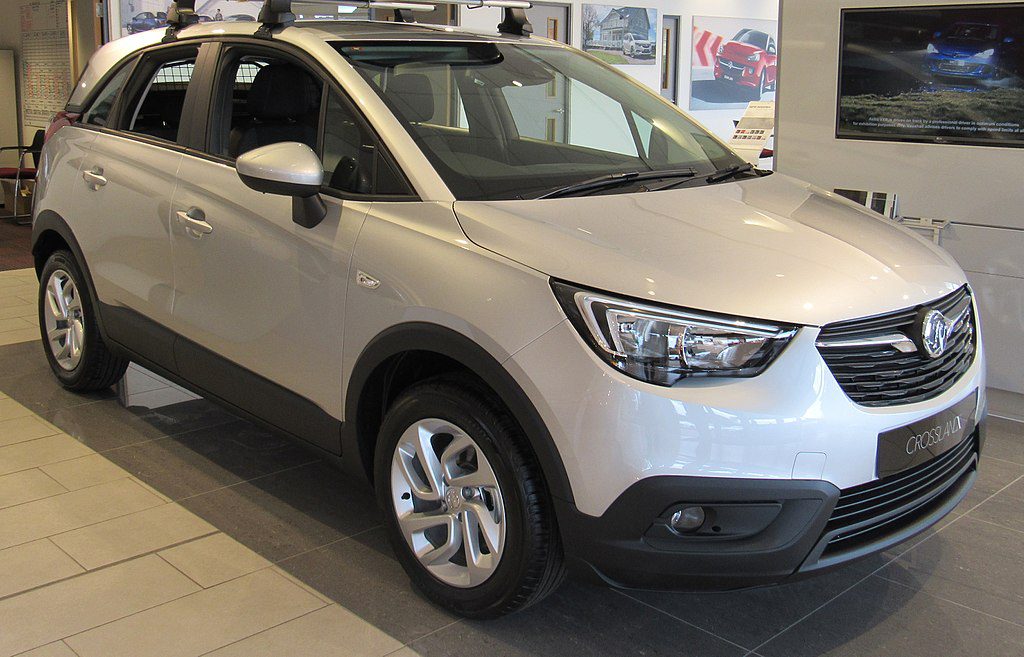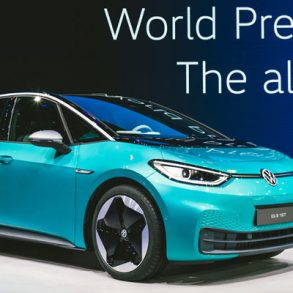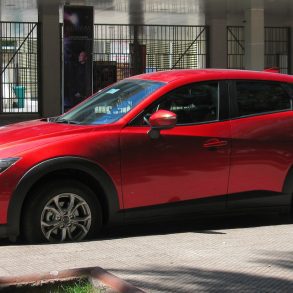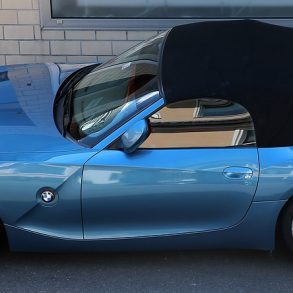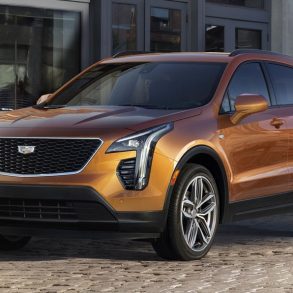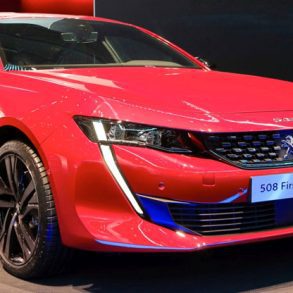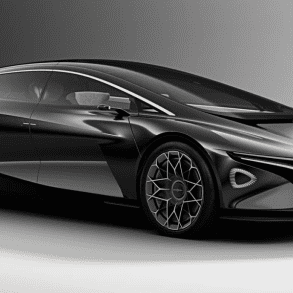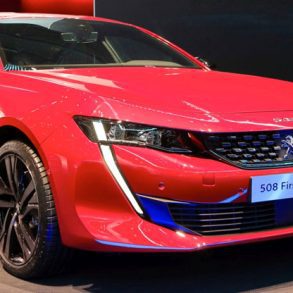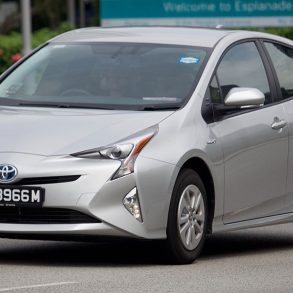It’s that time of the year again: everybody who’s somebody in the automotive industry can be found within just a few relatively small show floors at the Geneva Convention Center, where the cars are the real stars. The Geneva International Motor Show, as it’s officially called, is packed with new releases and world premieres every year and the 87th edition is no different. Of course CarSalesBase.com is there too to feel the pulse of the industry and to get an idea of what’s going to be a hit and what’s going to flop. And as you’ve become used to from us, we have an opinion on the lastest launches and would like to know yours too. Which cars stir our senses, which ones need to go back to the drawing board and which are just plain mweh?
Alpine A110
Bart: hot
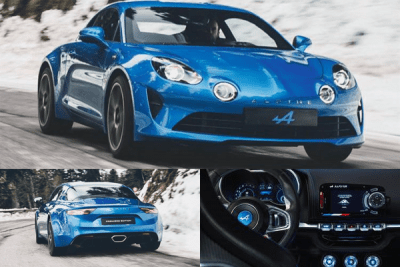 It’s always to see a brand with such a great heritage make a comeback, even if most car buyers may not even remember it, let alone have ever seen an Alpine in real life. Sure, in this segment brand value plays a great factor, but so does design and performance. The former is well taken care of in my opinion, the retro design with modern touches actually works on the A110. Performance promises to tick all the boxes as well thanks to its lightweight aluminium construction and 252hp on 1080kg is pretty impressive. Better than a Cayman? Hard to say, but at least it’s different. And I mean that in a good way.
It’s always to see a brand with such a great heritage make a comeback, even if most car buyers may not even remember it, let alone have ever seen an Alpine in real life. Sure, in this segment brand value plays a great factor, but so does design and performance. The former is well taken care of in my opinion, the retro design with modern touches actually works on the A110. Performance promises to tick all the boxes as well thanks to its lightweight aluminium construction and 252hp on 1080kg is pretty impressive. Better than a Cayman? Hard to say, but at least it’s different. And I mean that in a good way.
Kriss: hot
I agree with Bart – it’s great to see Alpine make a comeback and challenge the Germano-Italian dominance of the segment. It looks great, and sports a great power-to-weight ratio thanks to its lightweight construction. In essence – I can’t imagine how this car could have turned out any better. But still I’m worried – many have tried and failed to provide a genuine challenge the Boxster/Cayman duo, and I’m afraid that no matter how good the A110 is, it’s not good enough to differentiate itself from the also-rans like the Alfa-Romeo 4C and Lotus Evora.
DS7 Crossback
Kriss: hot
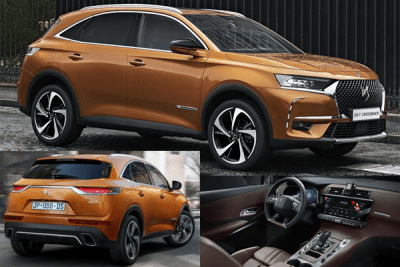 When I saw the first pictures of the DS7 Crossback I thought to myself that they really missed the boat on this one. But while I’m still not convinced by the car’s styling, or whether PSA’s EMP-2 platform can deliver the right handling/ride balance for a premium midsized SUV, the model has quickly grown on me. For starters, the styling looks better than in the early pictures, and the interior is quite stunning. But more importantly, I think PSA has put some serious effort into giving the model some genuine high-tech credentials, including the trick lighting, double 12-inch screens in the interior, to the Active Scan Suspension which aims to deliver the carpet-like ride the Citroën DS was famous for.
When I saw the first pictures of the DS7 Crossback I thought to myself that they really missed the boat on this one. But while I’m still not convinced by the car’s styling, or whether PSA’s EMP-2 platform can deliver the right handling/ride balance for a premium midsized SUV, the model has quickly grown on me. For starters, the styling looks better than in the early pictures, and the interior is quite stunning. But more importantly, I think PSA has put some serious effort into giving the model some genuine high-tech credentials, including the trick lighting, double 12-inch screens in the interior, to the Active Scan Suspension which aims to deliver the carpet-like ride the Citroën DS was famous for.
Bart: so-so
I’m glad DS has finally realized that crossovers are the way to go if you want to be(come) a respected luxury brand. Sales of luxury sedans have been in stagnation for years while SUVs and crossovers are gaining popularity fast. The DS7 Crossback is the least the brand needed to prevent itself from fading into oblivion. And the interior is 100% DS worthy, challenging the best in its class. So why no hit for me? I’m not entirely convinced of the exterior design, especially the grille. The rear looks kinda sleek thanks the wide and narrow lights with cool graphics, but also a bit Audi Q5-like. And the headlights are one of the coolest features of the front, but the proportions of the grille make the DS7 look a bit unbalanced.
Ford Fiesta
Bart: hot
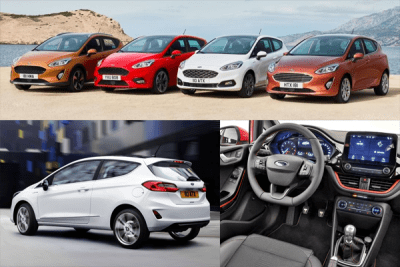 The Fiesta has been Europe’s best selling subcompact car for most of the last decade (although the Renault Clio took over in 2016) and for a good reason: it was a well-balanced and versatile car, at or above average in almost all the important disciplines while the infamous ST hot hatch gave the entire Fiesta range a more sporty image. The new models continues with that same recipe and promises to have something on offer for everyone with its four distinct styles in both two-door and four-door availability, so expect the new Fiesta to reclaim the segment lead and stay there. Its design won’t get many hearts racing but won’t offend anyone either. It also offers an ST version again, this time with 200hp from a 3-cylinder engine!
The Fiesta has been Europe’s best selling subcompact car for most of the last decade (although the Renault Clio took over in 2016) and for a good reason: it was a well-balanced and versatile car, at or above average in almost all the important disciplines while the infamous ST hot hatch gave the entire Fiesta range a more sporty image. The new models continues with that same recipe and promises to have something on offer for everyone with its four distinct styles in both two-door and four-door availability, so expect the new Fiesta to reclaim the segment lead and stay there. Its design won’t get many hearts racing but won’t offend anyone either. It also offers an ST version again, this time with 200hp from a 3-cylinder engine!
Kriss: so-so
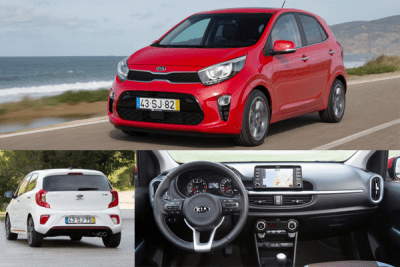 I agree with Bart that the Fiesta will appeal to a wide range of customers, but to me the latest Fiesta feels like a bit of a missed opportunity – a Focus Mk II rather than Mk I, if you will. For starters, I think its evolutionary look managed to dilute the great looks of its predecessor, especially from the front where it looks like a surprised fish. Same story in the interior – it looks like another only semi-decent effort, neither as stylish as the Peugeot 208 that clearly inspired it, nor as solid and elegant as the VW Polo. Ultimately, with competitors such as the adventurously different Citroën C3, the sexy Seat Ibiza and the rejuvenated Nissan Micra, I can’t help Ford needed to do more with the Fiesta than it did.
I agree with Bart that the Fiesta will appeal to a wide range of customers, but to me the latest Fiesta feels like a bit of a missed opportunity – a Focus Mk II rather than Mk I, if you will. For starters, I think its evolutionary look managed to dilute the great looks of its predecessor, especially from the front where it looks like a surprised fish. Same story in the interior – it looks like another only semi-decent effort, neither as stylish as the Peugeot 208 that clearly inspired it, nor as solid and elegant as the VW Polo. Ultimately, with competitors such as the adventurously different Citroën C3, the sexy Seat Ibiza and the rejuvenated Nissan Micra, I can’t help Ford needed to do more with the Fiesta than it did.
Kia Picanto
Kriss: hot
I always thought the Kia Picanto was a very good little car that suffered from a few too many reminders of Kia’s past as a maker of under-cooked econo-mobiles: a crummy interior and so-so looks with awkward details (the jutting front spoiler) and crummy stance (tiny wheels). The new Picanto seems to have corrected both issues – the new facia is much better resolved, the wheels manage not to looks as tiny as before (not sure if that’s just the launch model, but I think they’re now bigger), while the interior looks good enough to challenge for class honors. After the disappointing Optima and Rio, this seems like a return to form in the mainstream for Kia.
Bart: so-so
The South-Korean brand is on a hot streak designwise lately, with the Stinger getting many hands together and now the new Picanto. Even though it’s evolutionary design and the changes only appear minor at first glance, the minicar now has a much more confident stance and amore mature look. On the other hand, minicar buyers tend to be susceptible to trendy design, hence the ongoing success of the Fiat 500 and the Volkswagen Up! but also the Toyota Aygo’s higher volume than the Peugoet 108. The Picanto has never been a strong seller in Europe’s biggest minicar market Italy where style and flair are of the highest priority, but instead got as much as a fifth of its volume from value conscious Dutch buyers. Despite its qualities, the new generation isn’t likely to change any of that and will be hard pressed to reach the model’s peak volume of 85.000 sales in 2005.
Mitsubishi Eclipse Cross
Bart: not
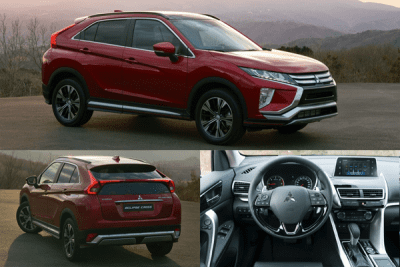 This is exactly the type and size of vehicle Mitsubishi could use: the brand has been a strong player in the SUV and crossover segments and the next generation ASX will shrink a little to better compete against the small (B-segment) crossovers as it’s now in between segments, leaving a gap between it and the D-segment Outlander. But I have two issues with the Eclipse Cross and the obvious one is with the name. I get that they want to position this as a sporty crossover, but using the legendary Eclipse name will only spoil any equity that name has. I doubt even a single person will buy the car only for its name, so they could’ve just gone for some non-descript combination of letters instead. Secondly, I find the design less than attractive, to bring it gently. The sloping rear window is supposed to give it a coupe-like look, I guess. But the horizontal bar with the third brake light is a bit too much. This rear window design has been used in various ways on a number of cars (Honda Civic Euro 8th gen, Pontiac Aztek, Toyota Prius), but has never really appealed to me. On the Eclipse Sport, it looks plain odd.
This is exactly the type and size of vehicle Mitsubishi could use: the brand has been a strong player in the SUV and crossover segments and the next generation ASX will shrink a little to better compete against the small (B-segment) crossovers as it’s now in between segments, leaving a gap between it and the D-segment Outlander. But I have two issues with the Eclipse Cross and the obvious one is with the name. I get that they want to position this as a sporty crossover, but using the legendary Eclipse name will only spoil any equity that name has. I doubt even a single person will buy the car only for its name, so they could’ve just gone for some non-descript combination of letters instead. Secondly, I find the design less than attractive, to bring it gently. The sloping rear window is supposed to give it a coupe-like look, I guess. But the horizontal bar with the third brake light is a bit too much. This rear window design has been used in various ways on a number of cars (Honda Civic Euro 8th gen, Pontiac Aztek, Toyota Prius), but has never really appealed to me. On the Eclipse Sport, it looks plain odd.
Kriss: not
I have to agree with Bart here – looking at the new, ahem, “Eclipse” Cross it’s hard to see how Mitsubishi plans to stay relevant as a brand. I find the looks semi-appealing when you look at the big picture, but close in on the details and the Cross seems like a car designed in the early 2000s (the glasshouse looks like it was developed alongside the current Lancer). Things only get worse in the interior, which looks very behind its time. But the worst thing is that the new model lacks a clear USP beyond its (presumed) low price, suggesting that Mitsubishi has learned nothing from its decline over the past two decades.
Opel/Vauxhall Crossland X
Bart: not
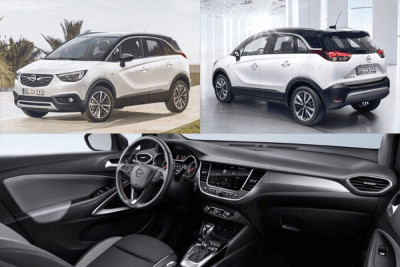 The Meriva is dead, long live the Crossland X. GM wisely decided the small MPV segment is shrinking and small crossovers are hot, but obviously didn’t want to lose its loyal following of elderly people looking for a small car they can get in and out of without much trouble for their fragile hips. So they killed the suicide doors, slightly redesigned the exterior but kept the proportions of the Meriva, which gives the Crossland an awkward tall and narrow look. They also added a similar chrome strip to the C-pillar which makes the Astra station wagon look like a hearse, and now hope that people will believe it’s a crossover. Am I being too harsh? Maybe, but the Crossland looks like the sorriest attempt at disguising an MPV as something that’s more trendy but fails in every aspect. Opel/Vauxhall’s new owner PSA has built the next generation Citroën C3 Picasso on the same platform and also wants to turn that car into a crossover. I hope they do a better job, so this think can be killed quickly.
The Meriva is dead, long live the Crossland X. GM wisely decided the small MPV segment is shrinking and small crossovers are hot, but obviously didn’t want to lose its loyal following of elderly people looking for a small car they can get in and out of without much trouble for their fragile hips. So they killed the suicide doors, slightly redesigned the exterior but kept the proportions of the Meriva, which gives the Crossland an awkward tall and narrow look. They also added a similar chrome strip to the C-pillar which makes the Astra station wagon look like a hearse, and now hope that people will believe it’s a crossover. Am I being too harsh? Maybe, but the Crossland looks like the sorriest attempt at disguising an MPV as something that’s more trendy but fails in every aspect. Opel/Vauxhall’s new owner PSA has built the next generation Citroën C3 Picasso on the same platform and also wants to turn that car into a crossover. I hope they do a better job, so this think can be killed quickly.
Kriss: so-so
I think Bart is too hard on the Crossland X. For starters I think it looks OK. Sure, it’s clearly an MPV disguising as a crossover, and suffers from the same tall/narrow/long wheelbase proportions as the Peugeot 3008 and 5008, but for what it is it looks just fine. Second, I think the interior looks really good with the giant screen integrated neatly in the middle (as opposed to the sticking-out unit from the Fiesta). It may not set many pulses running, but I think the Crossland X has the potential to appeal much in the same way Skodas do – it looks decent, has a pretty good interior, and is likely to provide a good-enough drive for those looking for something that’s not flashy either in appearance or attitude. I doubt this will make the Crossland X an overnight market success, but I feel like it may carve a decent part of the market for itself (I mean, if Peugeot 2008 can do it…).
We’ll continue with the Opel/Vauxhall Insignia, Porsche Panamera Sport Turismo, Range Rover Velar, Seat Ibiza, Suzuki Swift, Volkswagen Arteon and Volvo XC60 in part 2, which also includes a poll for you to pick your favorites.

